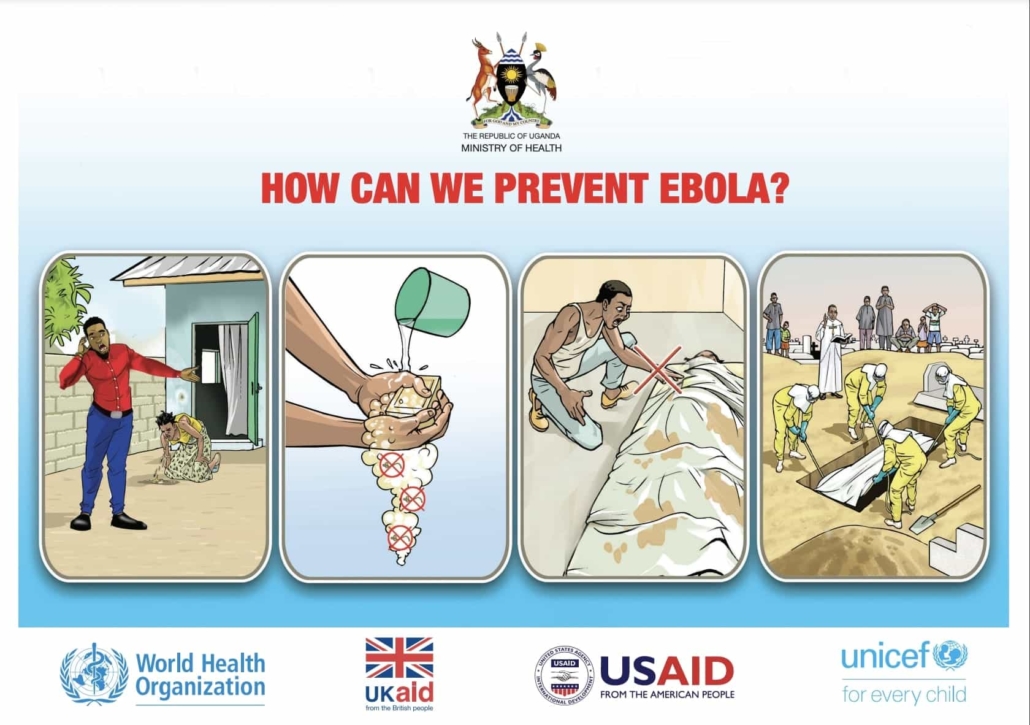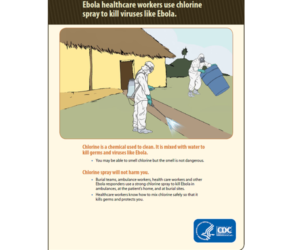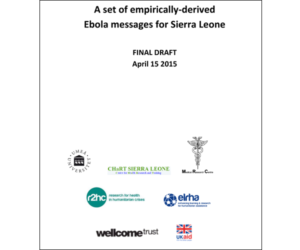Ebola Poster
 This illustrated poster provides general EVD facts, signs and symptoms, modes of transmission and prevention.
This illustrated poster provides general EVD facts, signs and symptoms, modes of transmission and prevention.
Source: Ebola Poster
 This illustrated poster provides general EVD facts, signs and symptoms, modes of transmission and prevention.
This illustrated poster provides general EVD facts, signs and symptoms, modes of transmission and prevention.
Source: Ebola Poster
 This illustrated booklet addresses Frequently Asked Questions about EVD, including general facts, modes of transmission, prevention, treatment and common misconceptions.
This illustrated booklet addresses Frequently Asked Questions about EVD, including general facts, modes of transmission, prevention, treatment and common misconceptions.
Source: Ebola Q&A Booklet
 This resource consists of job aide cards with illustrations and talking points to guide health care workers’ conversations with community members. Topics include: general EVD facts, signs and symptoms, transmission, prevention, caring for the sick, safe&dignified burials, contact tracing and Ebola treatment units.
This resource consists of job aide cards with illustrations and talking points to guide health care workers’ conversations with community members. Topics include: general EVD facts, signs and symptoms, transmission, prevention, caring for the sick, safe&dignified burials, contact tracing and Ebola treatment units.
Source: How can we prevent Ebola- Job Aide
This animation—produced in collaboration with International Federation of Red Cross and Red Crescent Societies, UNICEF, and Yoni Goodman—brings to life key messages that help people see and understand how Ebola spreads and how to protect themselves and their communities.
 Poster describing the use of chlorine to kill viruses like Ebola. [Download]
Poster describing the use of chlorine to kill viruses like Ebola. [Download]
Ebola messages based on their qualitative research done in hotspot areas of Bombali and Urban Freetown, Jan-Feb 2015.
[one_half]A set of empirically-derived Ebola messages for Sierra Leone [Download]

 This radio spot from the Liberia Ministry of Health and Social Welfare focuses on the spread and prevention of Ebola.
This radio spot from the Liberia Ministry of Health and Social Welfare focuses on the spread and prevention of Ebola.
 The latest Ebola outbreak is the largest the world has ever seen, with more than 4,500 confirmed deaths in west Africa. Patients are often killed not by the virus itself, but by the overreaction of their immune system to the infection. Here, Ian Sample explains how Ebola is transmitted, the organs it disrupts, the symptoms of infection and the chances of survival.
The latest Ebola outbreak is the largest the world has ever seen, with more than 4,500 confirmed deaths in west Africa. Patients are often killed not by the virus itself, but by the overreaction of their immune system to the infection. Here, Ian Sample explains how Ebola is transmitted, the organs it disrupts, the symptoms of infection and the chances of survival.
Everyone knows that Ebola kills, but what exactly does it do? This video by Dr. Michael Smith explains the science behind how Ebola attacks the body.

The Ebola Communication Network was originally developed by the Health Communication Capacity Collaborative (Cooperative Agreement #AID-OAA-A-12-00058) and expanded under Breakthrough ACTION (Cooperative Agreement #AID-OAA-A-17-00017) both under the leadership of Johns Hopkins Center for Communication Programs. This website is now maintained by Johns Hopkins Center for Communication Programs and its contents are the sole responsibility of CCP. The contents of this website do not necessarily reflect the views of USAID, the United States Government, or Johns Hopkins University.
